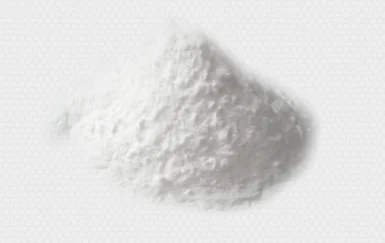Spherical silicon powder has high purity and very fine particles. It has good dielectric properties and thermal conductivity. It also has a low expansion coefficient. It is widely used in packaging, aerospace, coatings, medicine, and cosmetics. It is an irreplaceable filler.

There are two methods to prepare spherical silicon micropowder: a physical and a chemical method. The main methods are: flame, deflagration, high-temp melt spray, plasma, and self-propagating low-temp combustion. The chemical methods include: gas phase, liquid phase (sol-gel, precipitation, microemulsion), and chemical synthesis.
In making spherical silicon micropowder, strict control of each step is key. It ensures the product meets quality standards.
Spherical Silica Powder Raw Material Control Factors
The main raw material of spherical silica powder is angular molten or crystalline silica powder.
Stability of raw materials
The best raw materials for making spherical silicon micropowder are angular silicon micropowder. It must come from the same ore vein and production process. This can maximize the uniformity of the raw materials. It can ensure that products with high spheroidization rates can be produced. This is while keeping factors like spheroidization temperature, gas supply, feed amount, pressure, and flow rate unchanged.
The physical and chemical indicators of raw materials should be controlled within a certain range
If the physical and chemical indicators of the raw materials fluctuate too much, it will not only affect the spheroidization temperature, but also affect the dispersion of the spheres.
Raw material particle size and particle size distribution
Different particle sizes have different heating areas and different passivation temperatures after heating. The passivation temperature of large particles is higher than that of small particles. So, the spheroidization rate of wide distribution spherical silica powder, except for later compounding, is lower than that of narrow distribution spherical silica powder. This is why they use narrow distribution angular silica powder to make spherical silica powder.
Raw material particle dispersion
When processing angular silica powder, especially ultrafine types, secondary agglomeration often occurs due to increased surface energy. If we can’t break up this mass, two or more particles will connect during spheroidization. This will harm the performance of the spherical powder.
Moisture content of raw materials
If the angular silicon micropowder used to make spherical silicon micropowder is not protected, it will absorb moisture. High humidity or prolonged exposure will also cause this. The resulting agglomerates will reduce the spheroidization of the spherical silicon micropowder.
The radioactive elements in the raw materials should be low
For the raw materials for low-radiation spherical silicon micropowder, the radiation elements (like uranium U and thorium Th) must be very low. This ensures the products meet the low-radiation requirements. This requires looking for low-radiation mineral sources from the raw stone. Such mines are rarely discovered at present. Once discovered, they are monopolized and other companies are severely restricted. Some have researched ways to reduce the uranium in silicon micropowder. They have had some success.
Spherical silicon powder requirements for gas
The gas used should have a high calorific value. The spherical silicon powder, especially the high-temperature burned one, has a spheroidization temperature of 1700-2500℃. So, the gas must have a high calorific value to reach the desired temperature.
The gas used should be very pure. Burning impure gas will leave a small amount of solid in the powder, harming its performance.
Mixed compounding of spherical silicon powder
To improve the spheroidization rate of spherical silicon micropowder, manufacturers first produce it with a narrow (single peak) size distribution. The narrow distribution of spherical silicon micropowder prevents compact packing. It doesn’t meet customers’ high filling requirements. It can’t maximize its excellent performance. To improve the filling rate, mix silicon micropowder products with different particle sizes. This creates a wide (multi-peak) distribution. It achieves high filling. It reduces the oil absorption of the silicon micropowder. It improves its fluidity.
Surface modification of spherical silica powder
There are two links in the surface modification of spherical silicon micropowder. One is to disperse the agglomerated particles of silicon micropowder. This is especially for ultrafine angular silicon micropowder. First, perform a surface activation treatment to disperse the particles. Then, sphericalize them. The surface dispersant must be fully volatilized at high temperatures. If not, it will cause carbon deposits in the spherical silicon micropowder, affecting product quality.
The second is the late modification of spherical silicon micropowder. Silicon micropowder is an inorganic filler mixed with organic resin. It has poor compatibility and is hard to disperse. This reduces the heat and moisture resistance of materials like circuit packaging and substrates. As a result, it affects the product’s reliability and stability. To improve the bonding of silicon micropowder with organic polymers, we must modify the silicon’s surface. This will enhance its performance in applications.
